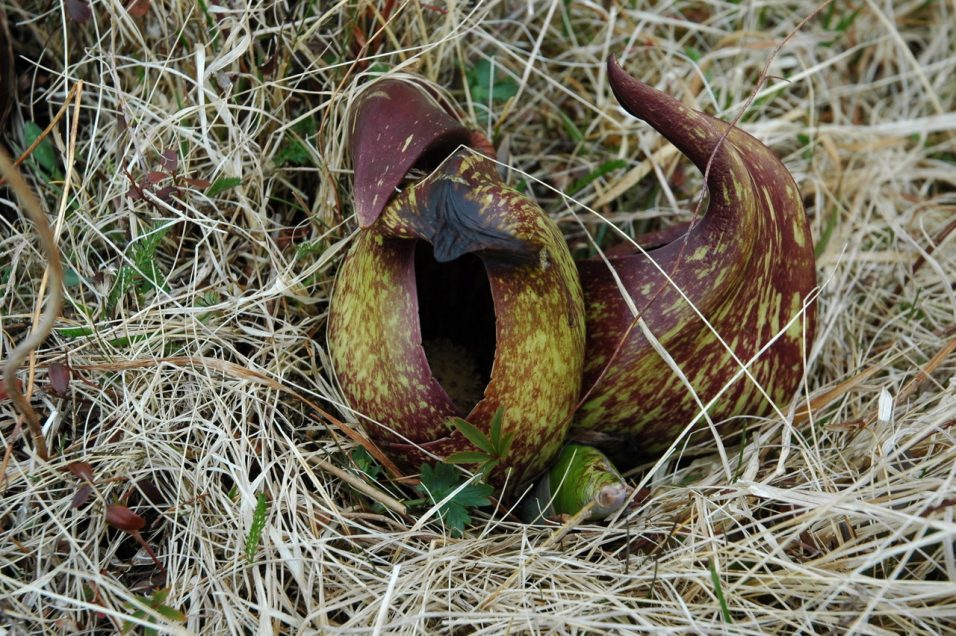What’s Growing at the Harriet Irving Botanical Gardens – Poisonous Plants
By Melanie Priesnitz, Conservation Horticulturist
Spring has arrived in the Acadian Forest. Little green shoots are starting to emerge from the warming soil, songbirds are signing, and hibernating animals are stretching their legs. Despite the feeling that we humans sometimes have that winter will never end, we can trust in nature that there’s no stopping spring!
One fascinating and determined native plant emerging right now in southwestern Nova Scotia is Skunk cabbage (Symplocarpus foetidus). This aptly-named plant has a stinky but beautiful flower that begins to emerge from the soil, encapsulated in its spathe (flower sheath), as early as March. Skunk cabbage is not put off by spring snow; it has the ability to produce its own metabolic heat to thaw surrounding soil. Temperatures in the buds of these amazing plants have been recorded between 15–35°C. The internal heat not only melts any lingering snow, it also does a good job of spreading the plant’s charming odor, thus attracting pollinators such as flies and bees.
If you spend time in the woods and are curious about what other potentially deadly plants are around you, there’s a great new app that you can download to your smartphone – ‘Harmful Nova Scotia Plants’ by Marian Munro, Curator of Botany at the Nova Scotia Museum. This information is also available on the Museum’s website at https://novascotia.ca/museum/
